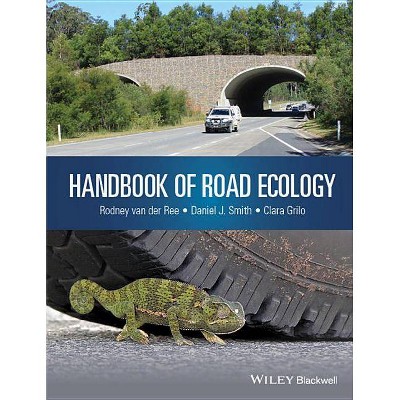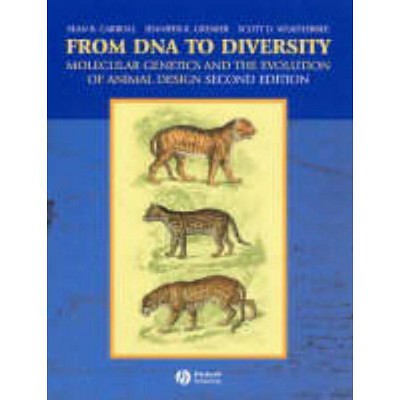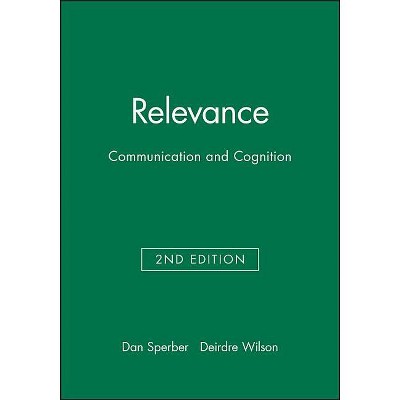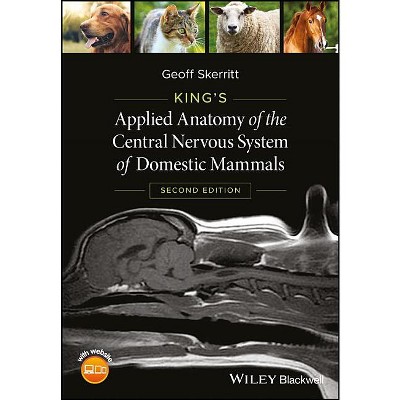Evolution of Island Mammals 2e - 2nd Edition by Alexandra Van Der Geer & George Lyras & John De Vos (Hardcover)

About this item
Highlights
- EVOLUTION OF ISLAND MAMMALS Evolution on islands differs in a number of important ways from evolution on mainland areas.
- About the Author: Alexandra van der Geer is a researcher at Naturalis Biodiversity Center, Leiden, the Netherlands.
- 576 Pages
- Science, Life Sciences
Description
About the Book
"Isolated from the continental landmasses, island species evolve novel and often extreme adaptations to new ecological niches. In this book, the past effects of insularity on mammal lineages are discussed, based on more than 300 fossil insular species, which were endemic to at least 30 islands all over the world, and ranging from the Eocene to the Holocene, with a few Cretaceous cases. The evolution of body size change is at first sight the most spectacular and certainly the best-known effect of ecological release-a shift and decline in the relative importance of interspecific interactions to an increase in the importance of intraspecific interactions-. Many large herbivores, like elephants (plate 1) and hippos, evolved towards miniature forms on islands while many small mammals, like rodents and pikas, evolved towards giant forms. Since island faunas are highly disharmonic, with many major groups missing, most or all ecologically relevant competitors are absent. Therefore, the colonising species could expand or even change their ecological niche. In fossil species, this can be deduced from observations such as the evolution of hypsodonty-high-crowned cheek teeth-in herbivores, shifts in prey species in carnivores, fusion and shortening of limb bones, and changes in body proportions. Patterns are not the same everywhere, as we shall see. Islands differ amongst each other, and so do their faunas: these may be balanced (mainland ratio between carnivore and herbivore species), unbalanced (ratio between carnivores and herbivores shifted towards the latter), disharmonic or depauperate (poor taxonomic diversity on higher levels), entirely endemic (all species restricted to the island, not found elsewhere) or mainland-like (hardly different from continental faunas of similar latitude)"--Book Synopsis
EVOLUTION OF ISLAND MAMMALSEvolution on islands differs in a number of important ways from evolution on mainland areas. Over millions of years of isolation, exceptional and sometimes bizarre mammals evolved on islands, such as pig-sized elephants and hippos, giant rats and gorilla-sized lemurs that would have been formidable to their mainland ancestors.
Evolution of Island Mammals, Second Edition, provides an updated and expanded overview of the current knowledge on fossil island mammals worldwide, ranging from the Oligocene to the onset of the Holocene. The book addresses evolutionary processes and key aspects of insular mammal biology, exemplified by a variety of fossil species.
Readers familiar with the first edition will find here a host of updated and enhanced material, including:
- An entirely new chapter on the island rule
- Updated and expanded theoretical chapters
- Updated and improved taxonomic information
- Extensive coverage of new discoveries
- Body masses or body size indices for most extinct island mammals
- New figures visualizing the richness of the fossil record
This accessible and richly illustrated textbook is written for graduate level students and professional researchers in evolutionary biology, palaeontology, biogeography, zoology, and ecology.
From the Back Cover
Evolution on islands differs in a number of important ways from evolution on mainland areas. Over millions of years of isolation, exceptional and sometimes bizarre mammals evolved on islands, such as pig-sized elephants and hippos, giant rats and gorilla-sized lemurs that would have been formidable to their mainland ancestors.
Evolution of Island Mammals, Second Edition, provides an updated and expanded overview of the current knowledge on fossil island mammals worldwide, ranging from the Oligocene to the onset of the Holocene. The book addresses evolutionary processes and key aspects of insular mammal biology, exemplified by a variety of fossil species.
Readers familiar with the first edition will find here a host of updated and enhanced material, including:
- An entirely new chapter on the island rule
- Updated and expanded theoretical chapters
- Updated and improved taxonomic information
- Extensive coverage of new discoveries
- Body masses or body size indices for most extinct island mammals
- New figures visualizing the richness of the fossil record
This accessible and richly illustrated textbook is written for graduate level students and professional researchers in evolutionary biology, palaeontology, biogeography, zoology, and ecology.
About the Author
Alexandra van der Geer is a researcher at Naturalis Biodiversity Center, Leiden, the Netherlands. She publishes on various subjects, including insularity, primatology and the relation between humans and animals. Among her previous books are Animals in Stone and Hoe dieren op eilanden evolueren.
George Lyras is a member of the faculty of Geology and Geoenvironment of the University of Athens, Greece. His research focuses primarily on the evolution of carnivores, brain evolution and biogeography of insular mammals.
John de Vos is honorary research associate and former curator of the Dubois Collection and the Collection of Pleistocene mammal fossils from the Netherlands and the North Sea at Naturalis Biodiversity Center, the Netherlands. His expertise and field of research include the taxonomic, systematic, geographic and stratigraphic research of the Pleistocene mammals of Southeast Asia in relation to fossil humans and fossil island faunas.
Shipping details
Return details
Trending Non-Fiction











